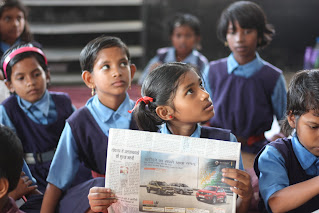Female Education
*100 words *150 words *200 words *250 words
Female Education (100 words)
Female education plays a vital role in promoting gender equality and fostering social and economic development. When girls have access to education, they gain knowledge and skills that empower them to make informed choices, pursue their aspirations, and contribute to society. Educated women are more likely to marry later, have fewer children, and provide better healthcare and education for their families. Additionally, female education is associated with higher employment rates, increased income, and reduced poverty levels. By investing in girls' education, societies can break the cycle of gender discrimination, unlock the potential of millions of women, and create a more equitable and prosperous future for all.
Female Education (150 words)
Female education is a critical factor in promoting gender equality and achieving sustainable development. Access to education for girls and women has numerous positive impacts on individuals, families, and societies as a whole. When girls are educated, they are more likely to lead healthier lives, make informed decisions about their reproductive health, and have fewer children. Furthermore, educated women are more likely to participate in the workforce, earn higher incomes, and contribute to economic growth. Investing in female education also leads to positive social outcomes, such as reduced rates of child marriage and improved child and maternal health. Moreover, educated women become agents of change, advocating for gender equality and empowering future generations. By prioritizing and investing in female education, societies can break the cycle of poverty, promote social progress, and build a more inclusive and equitable future.
Female Education (200 words)
Female education plays a vital role in promoting social and economic development, gender equality, and overall well-being. When girls are given equal access to education, they have the opportunity to acquire knowledge, skills, and confidence to pursue their dreams and contribute to society. Educated women are more likely to break the cycle of poverty, make informed decisions about their health, and have a positive impact on their families and communities.
Investing in female education yields numerous benefits. It leads to increased economic productivity and growth, as educated women are more likely to enter the workforce and contribute to the labor market. It also reduces child mortality rates and improves maternal health, as educated women tend to have healthier families and make better choices regarding nutrition, healthcare, and hygiene.
Moreover, female education promotes gender equality and empowers women to participate actively in decision-making processes. By challenging traditional gender roles and stereotypes, education fosters a more inclusive and equitable society where women can advocate for their rights and contribute to policy-making.
Efforts to promote female education should focus on eliminating barriers such as gender-based discrimination, poverty, child marriage, and limited access to schools. It requires collaboration among governments, communities, and international organizations to ensure quality education for all girls, regardless of their socio-economic background or geographic location. By investing in female education, societies can create a more just and prosperous future for all.
Female Education (250 words)
Female education plays a vital role in the development and progress of societies worldwide. It encompasses not only the right to access education but also the opportunities and support necessary for girls and women to thrive academically, socially, and economically.
When girls are educated, the benefits extend far beyond individual empowerment. Firstly, educated women have better prospects for employment and higher incomes, which can contribute to poverty reduction and economic growth. Studies have shown that investing in girls' education can have a multiplier effect, leading to increased productivity, improved health outcomes, and a more skilled workforce.
Education also equips girls with knowledge and skills that enable them to make informed decisions about their own lives, including their health, family planning, and personal safety. Educated girls are more likely to marry later, have fewer children, and provide better care for their families. Moreover, when women are educated, they are more likely to actively participate in decision-making processes at all levels, including political, social, and economic spheres, leading to more inclusive and representative governance.
However, despite progress in recent years, significant challenges persist. Cultural norms, poverty, child marriage, gender-based violence, and discriminatory attitudes still hinder girls' access to education in many parts of the world. Addressing these challenges requires a multi-faceted approach involving governments, communities, and international organizations to eliminate barriers, promote gender equality, and provide safe and supportive learning environments for girls.
In conclusion, female education is not just a matter of equality; it is an essential component for achieving sustainable development and a more equitable world. Investing in girls' education is a powerful tool for breaking the cycle of poverty, promoting gender equality, and fostering inclusive societies that benefit everyone.


Comments
Post a Comment